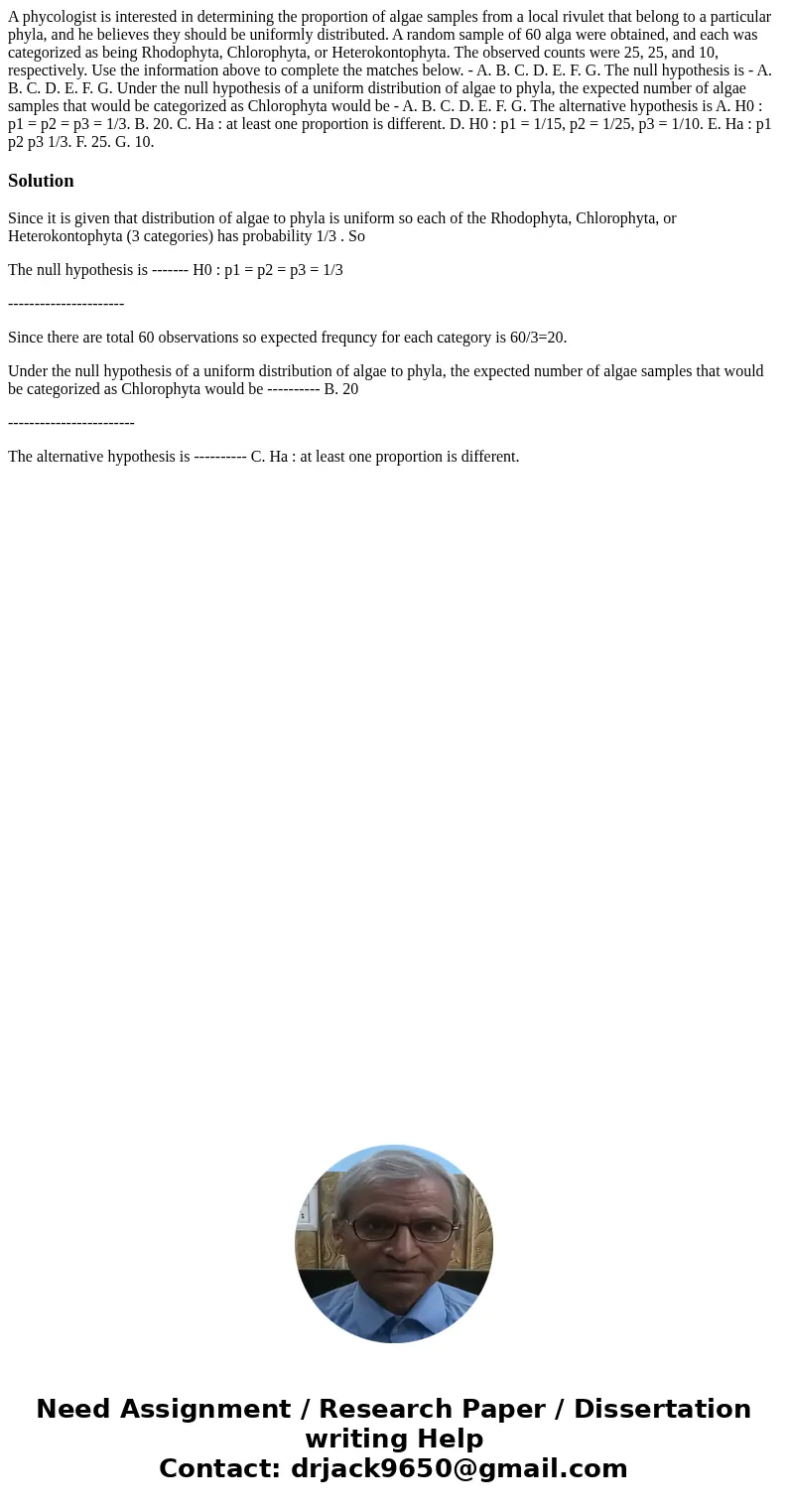A phycologist is interested in determining the proportion of
A phycologist is interested in determining the proportion of algae samples from a local rivulet that belong to a particular phyla, and he believes they should be uniformly distributed. A random sample of 60 alga were obtained, and each was categorized as being Rhodophyta, Chlorophyta, or Heterokontophyta. The observed counts were 25, 25, and 10, respectively. Use the information above to complete the matches below. - A. B. C. D. E. F. G. The null hypothesis is - A. B. C. D. E. F. G. Under the null hypothesis of a uniform distribution of algae to phyla, the expected number of algae samples that would be categorized as Chlorophyta would be - A. B. C. D. E. F. G. The alternative hypothesis is A. H0 : p1 = p2 = p3 = 1/3. B. 20. C. Ha : at least one proportion is different. D. H0 : p1 = 1/15, p2 = 1/25, p3 = 1/10. E. Ha : p1 p2 p3 1/3. F. 25. G. 10.
Solution
Since it is given that distribution of algae to phyla is uniform so each of the Rhodophyta, Chlorophyta, or Heterokontophyta (3 categories) has probability 1/3 . So
The null hypothesis is ------- H0 : p1 = p2 = p3 = 1/3
----------------------
Since there are total 60 observations so expected frequncy for each category is 60/3=20.
Under the null hypothesis of a uniform distribution of algae to phyla, the expected number of algae samples that would be categorized as Chlorophyta would be ---------- B. 20
------------------------
The alternative hypothesis is ---------- C. Ha : at least one proportion is different.

 Homework Sourse
Homework Sourse